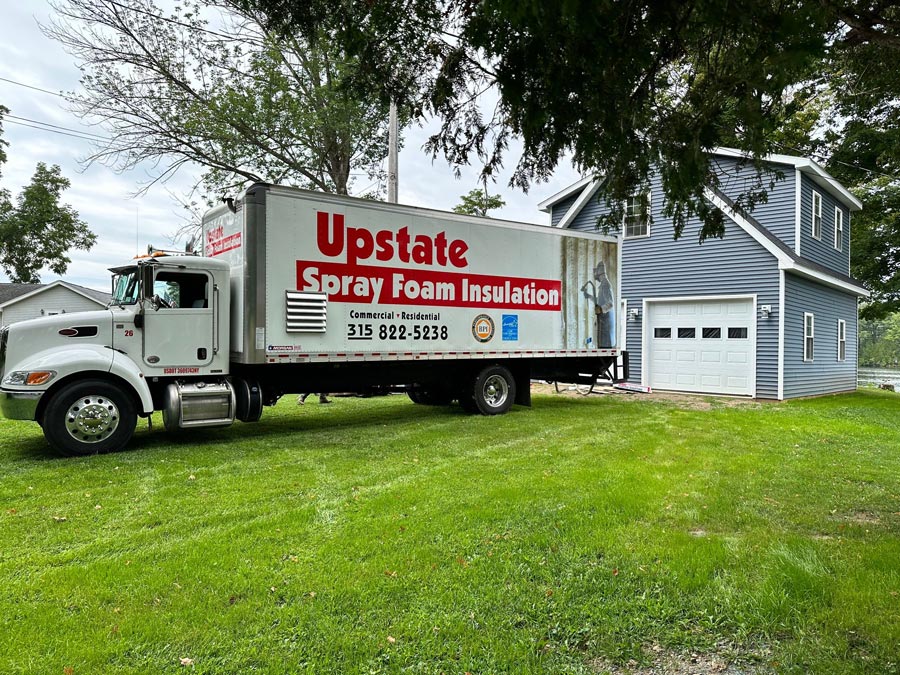Our team recently completed this new Garage/Studio space in Bouckville (NY).
We chose 2 lb. Closed Cell Foam to insulate the varying surfaces (walls, floor and roof) for its superior R-value per inch, its ability to provide a vapor barrier and also its ability to be installed to the roof without the need for roof ventilation.
This is a two story structure where the first level/ground floor will serve as a heated garage space. The second level will be a studio area that will be heated and cooled using heat pump technology. Upstate was brought in to determine the best course of insulation for the building. After having consulted with the homeowner the following facts were determined:
Both the garage and second floor studio were going to be heated.
With this, it is important for us to be sure we control vapor/moisture. In the winter time of Upstate NY, as COLD vehicles pull into a WARM garage space, the humidity in the building is surely to elevate. It is important for us to be sure the customer understands this and is able to control this elevated humidity in two ways. (1) We need to make sure that there is a vapor barrier in place between the two zones. With that being said – our team installed 1.5″ of Closed Cell Foam to the garage ceiling/studio floor. So when those cold vehicles pull in and snow drops off the car, the installed spray foam will help keep the studio area from seeing the same spike in vapor/humidity that the garage area will experience.
Without a good vapor barrier here – the second floor will also see this spike, which will also lead to poor indoor air quality, it will also create condensation on windows, damaged window trim long term and become an unhealthy environment.
The wall area is made up of 2×4 wall cavities.
We chose Closed Cell Foam also because of its ability to insulate 2×4 walls with the highest R-value in the industry. With an R-7 per inch value, Closed Cell Foam was installed in the exterior walls at an R-22. If we decided to use batt or roll insulation here, the R-value would only amount to a total or R-13. So by using Closed Cell Foam we’ve gained the highest R-value the industry can provide. Not to mention, Closed Cell Foam provided strength to the wall and also provides great insulation value behind the heat pump lines, and electrical boxes.
No ridge vent was in place for the roof system.
Where Closed Cell Foam truly shines is at the roof area. The roof of this building was hand-framed with dimensional lumber. When we see this, we need to “pull out all the stops”. We realize that we only have one chance to insulate this roof correctly and if we mess it up – the owner will deal with problems that will stick out like a sore thumb. With typical batt or roll insulation, ventilation is needed and required at the roofline. Because batt/roll insulation is permeable it will allow vapor to diffuse through it. Once the vapor diffuses through, it is important to have ventilation under the roof sheathing to carry that vapor outside. However, with no ridge vent on this building, the owners are limited as to what they can do. With this being said, we highly recommended the use of Closed Cell Foam. As an impermeable insulation type – Closed Cell Foam does not allow for vapor diffusion. It becomes a seamless vapor barrier. With that, the Closed Cell Foam was sprayed in direct contact with the roof sheathing from the eaves to the peak. This ensures that vapor is not getting to the roof system, but also solidifies that we’ve done this roof once, and will not have to revisit this roof for the lifetime of the building.




